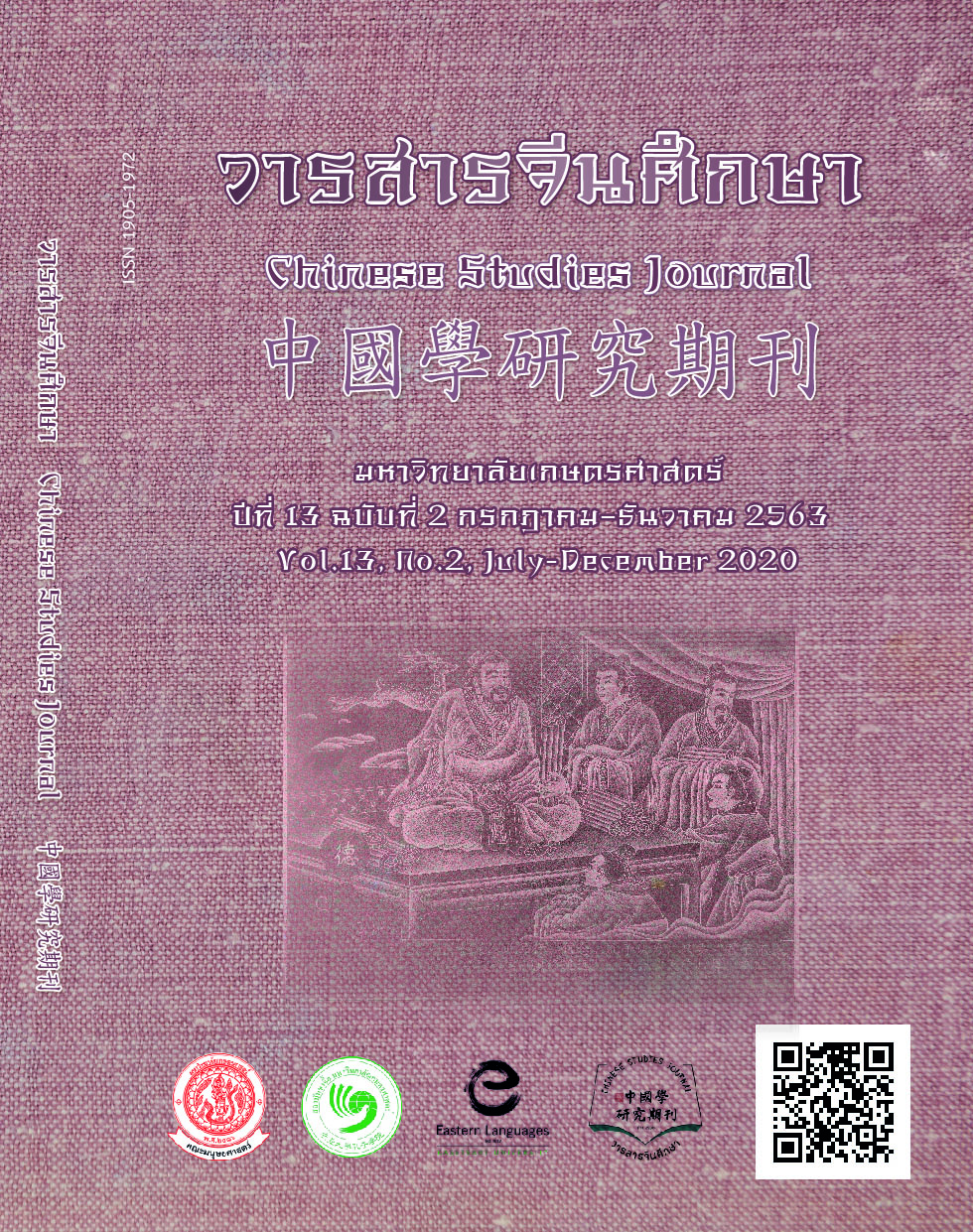Confucianism and Influence on Korean and Vietnamese women
Main Article Content
Abstract
Korean and Vietnam are Chinese language and culture influenced countries. This article aims to present the Confucianism influence in Korea and Vietnam. In Korea, Confucianism was employed as the state’s main policy in Choson period in 1392 and Goryeo dynasty employed Neo-Confucianism to govern the kingdom. Vietnam was politically influenced by China following Confucianism ideology. In 1460 Vietnamese king Lê Thánh Tông (黎聖宗) employed Neo-Confucianism as the main ideology in governing the kingdom. This article presents Confucianism influence on Korean and Vietnamese women by comparing Chinese women teaching literary work under Confucianism ideology 女诫 (Lessons for Women) by Chinese female writer Ban Zhao and Korean folktale 춘향 (The Story of Chunhyang) and Vietnamese poetry The Tale of Kiều. The study reveals that Confucianism influenced on Korean and Vietnamese women are 5 relationships, female virginity and being faithful to the husband. In Korea, before getting married, a woman will be trained 4 Confucian female arts which are ethics, speech, behavior and works in order to be a Confucian wise mother and a good wife. Three relationships parents-child, ruler-servant, husband-wife are called three bonds or samgang in Korean language. In Vietnam, Confucian 5 relationships which control female role are called Tham-Don and protecting female virginity before marriage is called Trinh included being faithful to her husband while being with or without him.
Article Details
ผลงานทางวิชาการที่ลงตีพิมพ์ในวารสารจีนศึกษา มหาวิทยาลัยเกษตรศาสตร์ เป็นลิขสิทธิ์ของผู้เขียนหรือผู้แปลผลงานนั้น หากนำลงในวารสารจีนศึกษาเป็นครั้งแรก เจ้าของผลงานสามารถนำไปตีพิมพ์ซ้ำในวารสารหรือหนังสืออื่นได้โดยมิต้องแจ้งให้ทราบล่วงหน้า แต่หากผลงานที่ได้รับพิจารณานำลงในวารสารจีนศึกษา เป็นผลงานที่เคยตีพิมพ์ที่อื่นมาก่อนเจ้าของผลงานต้องจัดการเรื่องปัญหาลิขสิทธิ์กับแหล่งพิมพ์แรกเอง หากเกิดปัญหาทางกฎหมาย ถือว่าไม่อยู่ในความรับผิดชอบของวารสารจีนศึกษา มหาวิทยาลัยเกษตรศาสตร์ ทั้งนี้ ความคิดเห็นต่างๆ ในบทความเป็นความคิดเห็นส่วนตัวของผู้เขียน ไม่เกี่ยวกับกองบรรณาธิการวารสารจีนศึกษา มหาวิทยาลัยเกษตรศาสตร์
References
ทวี สว่างปัญญางกูร. (2545). กวีนิพนธ์ยาวเรื่องทวี้เกี่ยว. กรุงเทพมหานคร:
ภาควิชาวรรณคดีเปรียบเทียบ คณะอักษรศาสตร์ จุฬาลงกรณ์มหาวิทยาลัย.
นุสรัต ระยะสวัสดิ์. (2547). ภาพลักษณ์สตรีเวียดนามใน ทวี้ เกี่ยว.
ปริญญานิพนธ์ อ.ม. (วรรณคดีเปรียบเทียบ). กรุงเทพมหานคร: จุฬาลงกรณ์
มหาวิทยาลัย.
บรัช, เกรแฮม. (2530). สร้างชีวิตและสังคมตามหลักคำสอนขงจื๊อ. แปลโดย
ละเอียด ศิลาน้อย. กรุงเทพมหานคร: สำนักพิมพ์ดอกหญ้า.
รติรัตน์ กุญแจทอง และ กนกพร นุ่มทอง. (2559). เตือนหญิง: วรรณกรรมสอน
สตรีที่ประพันธ์ขึ้นภายใต้วัฒนธรรมขงจื๊อ. วารสารจีนศึกษา, 9(1), 50-72.
วรพร ภู่พงศ์พันธุ์. (2556). เวียดนามกับการรับและปรับเปลี่ยนวัฒนธรรมจีน.
วารสารประชาคมวิจัย, 19(109), 25-28.
วีระชัย โชคมุกดา. (2555). ประวัติศาสตร์เกาหลี. กรุงเทพมหานคร: สำนักพิมพ์ยิปซี.
เสถียร โพธินันทะ. (2522). เมธีตะวันออก. กรุงเทพมหานคร: สำนักพิมพ์บรรณาคาร.
อดุลย์ รัตนมั่นเกษม. (2548). เพศในวัฒนธรรม 4,000 ปี. กรุงเทพมหานคร:
สุขภาพใจ.
de Bary, William Theodore; Chaffee, John W., eds. (1989). Neo-confucian
Education: The Formative Stage. USA: University of California Press.
Haboush, J and Deuchler, M., eds. (1999). Culture and the State in
Late Chosôn Korea. Cambridge: Harvard University Asia Center.
Kang, Hildi. (2001). Under the Black Umbrella: Voices from Colonial
Korea, 1910-1945. Ithaca: Cornell University Press.
Kim, Yung-Hee. (1994). Women’s Issues in 1920s Korea. Korean Culture,
15(1), 59-161.
Kim-Renaud, Young-Key. (2004). Creative Women of Korea: The
Fifteenth through the Twentieth Centuries. NY: M.E.Sharpe.
Yang, K., & Henderson, G. (1958). An Outline History of Korean
Confucianism: Part I: The Early Period and Yi Factionalism. The
Journal of Asian Studies, 18(1), 81-101.
김수례, 임수진. (2014). 전래 동화로 배우는 한국어. 경기도: 다락원.


